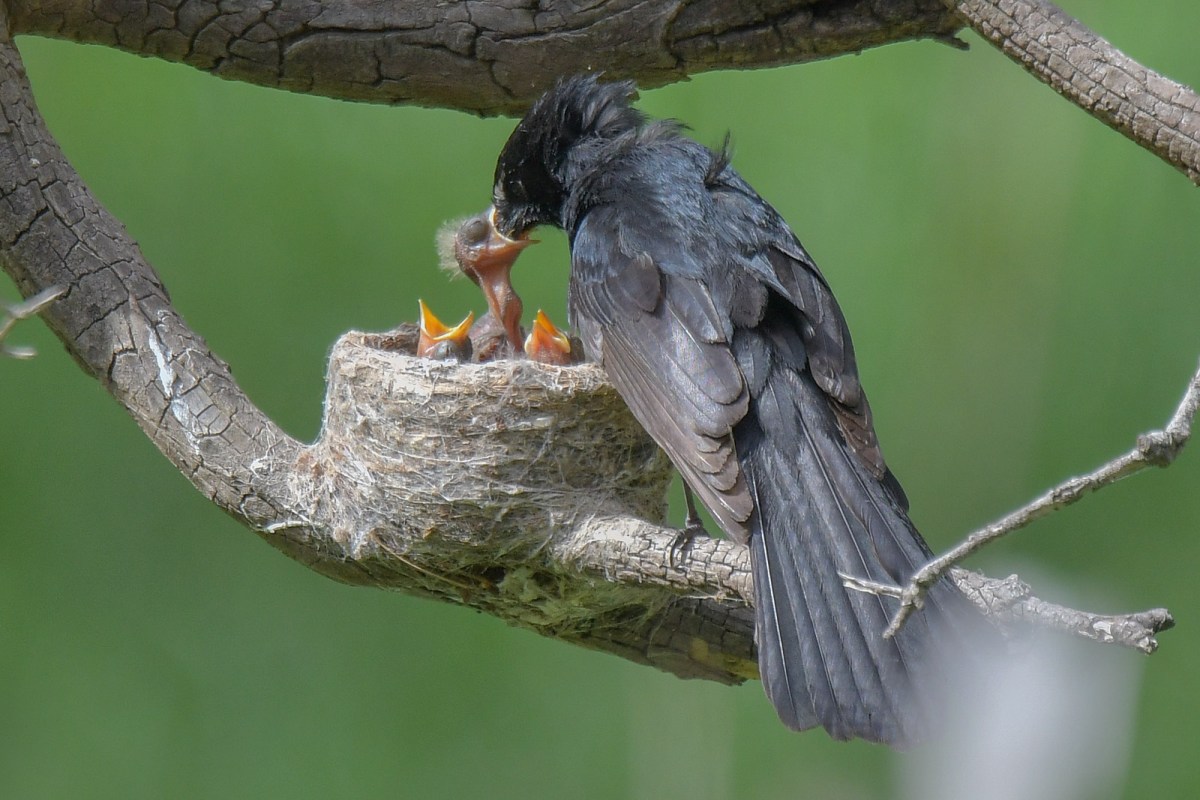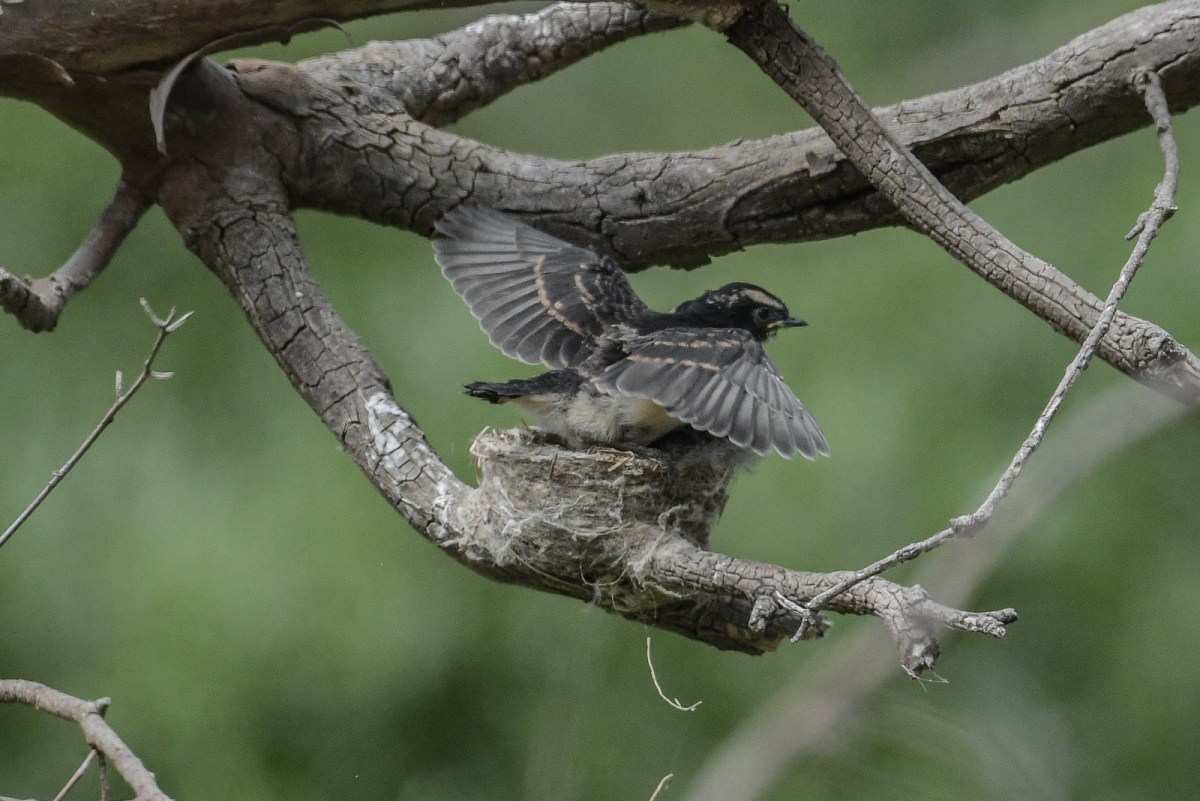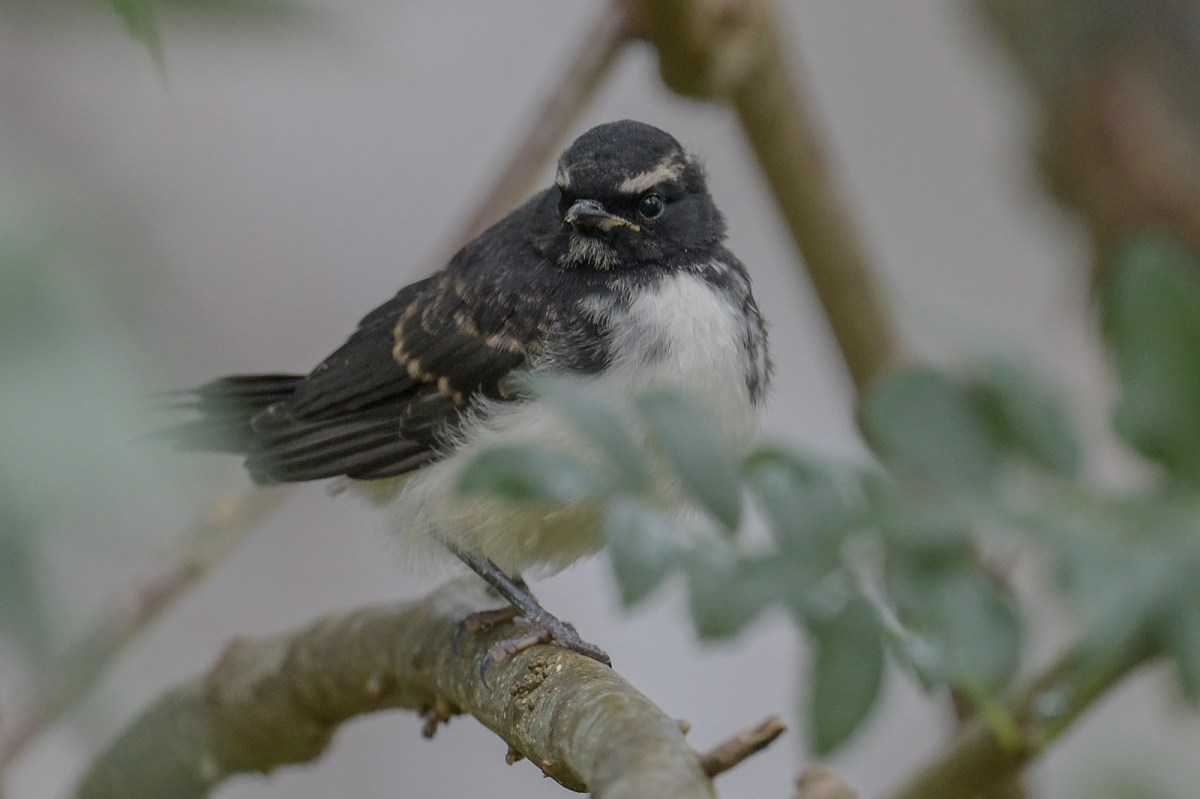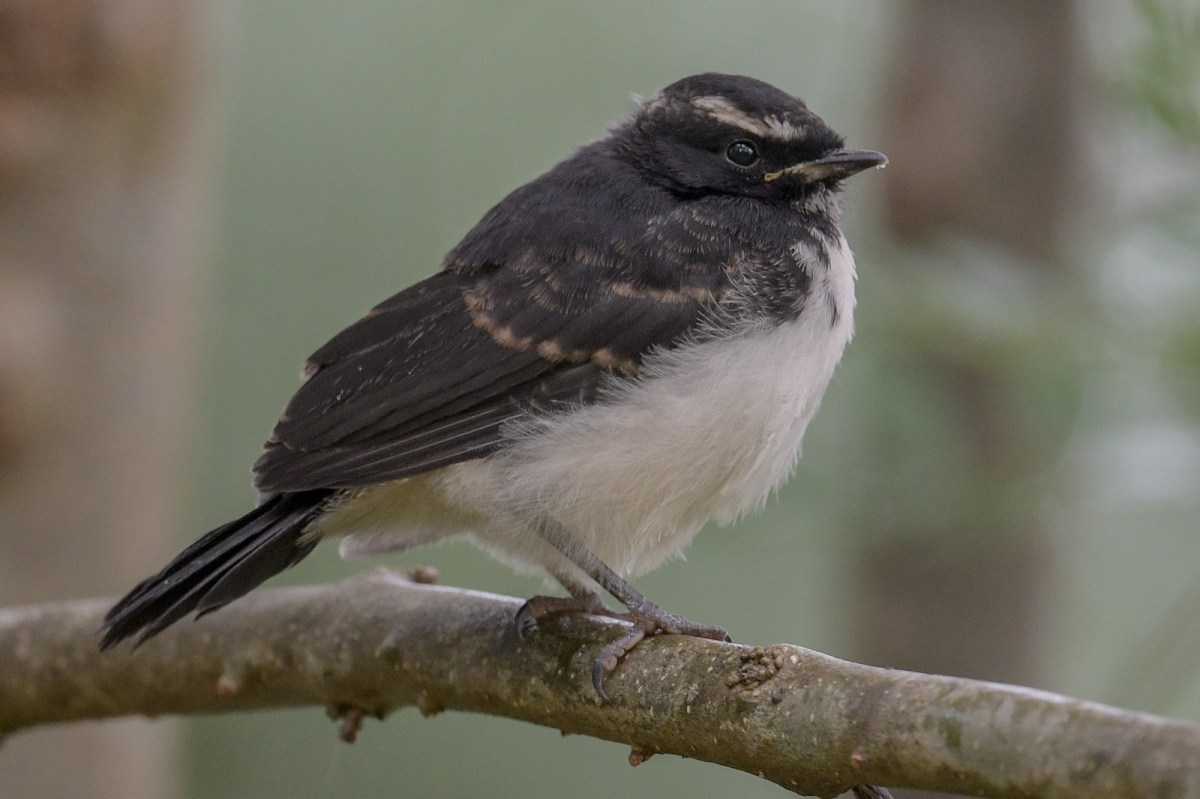Some things, as the credit card ad points out, Just can’t be purchased.
On our Kingfisher quest, we’ve crossed the paths of several Willie Wagtail pairs at nest. Not all of them are successful. But the agile and relentless little birds only try the harder. Most will, within a few days of loss, be hard at work on the next nest.
We found a pair that have survived with three happy little young—without any catastrophe. I don’t normally publish nesting photos of Wagtails until I am sure that they have been successful. No point in raising hopes and then seeing the nest disappear. The Wagtails take it as part of the cost of doing business, we humans seem to take the devastation personally.
A recent fledging of three out of four young Peregrine Falcons at 367 Collins Street is a case in point. The fb page had thousands of words of anguish at the loss of one of the young that succumbed before flying. Angry, “Why didn’t ‘they’ Do Something” posts seemed to miss the point that the parents had managed a magnificent feat in fledging three fat healthy young. It was as if people had lost their favourite teddybear when young and now had a reason to express their own personal loss.
But.
I digress.
It takes the Wagtails about a week to build the nest, about 14 days to hatch and about 14 days to bring them to wing.
This pair had a nest quite low down on a tree trunk that had only recently fallen in a previous storm. Some Wagtails seem to nest in quite secretive behind-the-leaves locations, and others take what seems to be the risk of exposing their work to the world. Such was this pair.
Several days back we’d seen the first of the young ‘branching’, so no doubt they would be on quite mobile when we checked again today. To add to our difficulty a light rain persisted in falling. However, the little tackers were quite dry and feisty safely under the leaves of a tree.
Well done, all round.







No doubt they all flew this day.






Peregrines have a breeding span of around 10 years. So if a pair raised 3 every year they would have 30 young and we couldn’t move for falcons.
So as with most species there is a very high mortality and not many make it to breeding age
LikeLiked by 1 person
G’day WP The venerable HANZAB puts success rate after one year at about 40% for Brown Falcons. No data on Peregrines but would have to be a similar story I’d guess.
Data on Willies is a bit more complex to unravel. But anecdotally we’ve seen pairs with as many as 4 clutches in a season and a success rate of 14 young fledged.
But, for every nest that succeeds I would estimate that as many as 3-4 are lost to predation or bad weather, both rain and heat.
We once found late in the season on the Bridge near the upper carpark at Werribee River Park, over 30 young Wagtails that had congregated together in a teenage creche 🙂 Ya gotta think teenagers in a shopping mall!!!
One year at Woodlands I also saw a similar number around the Somerton Carpark.
As you say, if they were 100% successful, we’d be wading in them.
LikeLiked by 1 person
A splendid series of images, David! Lovely to see the young develop. They are tenacious birds in all aspects of life!
Interesting to see the Tau Emerald Dragonfly being fed to the young, I haven’t seen any of them this year yet! Perhaps the Willies are devouring them all!
LikeLiked by 1 person
G;day David, then you’d be concerned as on one session we had the other day they fed mostly the Tau’s. Dad even gulped one down in between feeding sessions.
I love working with them when they are just out of the nest, as they don’t have enough tail to make much of a show, but none-the-less keep wagging it anyway. Also those baby colours look so good on the dense black.
LikeLike
When you think how utterly fearless they are, we might not be wading so much as being bowled over by them! A beautiful series of images David. They are delightful birds and you have done them full justice.
LikeLiked by 1 person
Thanks Eleanor, I often ponder what it would be like if they were the same size as chooks.! Never cease to be amazed at their boundless energy.
HANZAB even has a data set on how many times a minute they wag depending on activity. Fascinating
LikeLiked by 1 person
A lovely series on Willy David. and true, they are fearless feisty little balls of energy as they defend their nests at this time of year. As you shared, they are quite resilient little birds and don’t relent easily, even when nesting fails they will get up and try again.
LikeLiked by 1 person
Hello Ashley,
Thanks for that.
We see as many lost clutches as successful. Some of the most exposed survive, while some of the clever ‘hides’ are predated. I once had a pair that had made use of a finely branched prickle bush. They had to struggle to get in to feed, but at least they were secure.
If all goes well for them, they will be nesting again early next month.
We shall see.
LikeLiked by 1 person